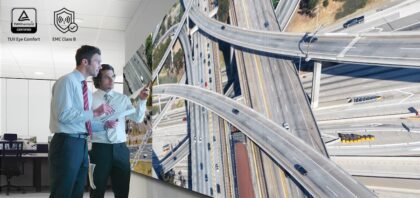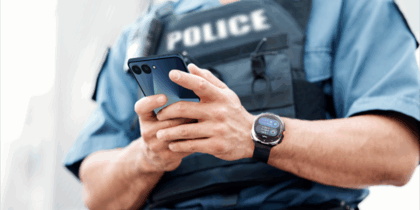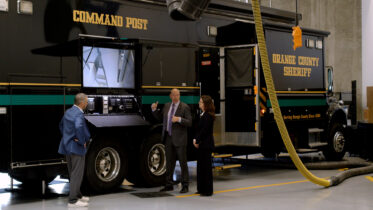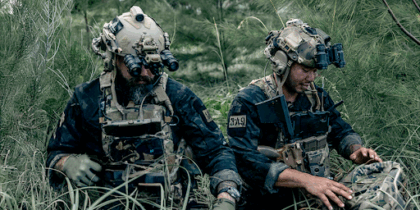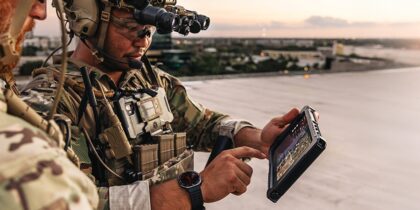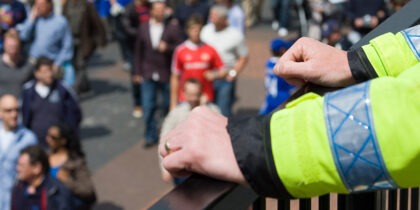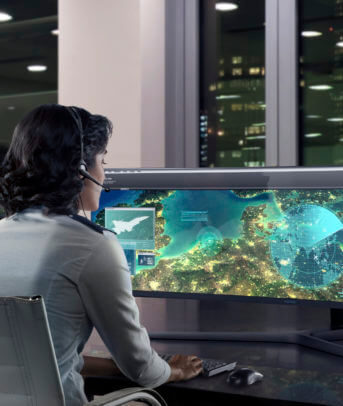From large-scale natural disasters to Chemical, Biological, Radiological, Nuclear and high-yield Explosive (CBRNE) threats, the public health risks from environmental hazards are a growing concern.
Environmental hazards present a significant public safety challenge for federal, state and local governments. Agencies must be ready to manage a diverse range of potential threats, adding another dimension to already complex security operational environments. These include environmental risks from unintentional disasters like industrial chemical spills or large-scale wildfires, as well as coordinated CBRNE attacks on large-scale events such as parades and international athletic competitions.
The growing proliferation of chemical, biological and nuclear initiatives driven by increasing industrialization across our global communities amplifies this concern. Whether it’s new chemical compounds used for industrial and agricultural expansion or emerging energy sources powering an AI-driven future, hazardous materials have the potential to significantly and negatively impact large populations, whether by accident or through nefarious actors.
To ensure public safety, multi-agency response teams must be able to reliably and rapidly collect, analyze and share environmental data, often across very large areas. This capability is critical to a timely, coordinated and effective response that can ultimately save lives.
Harnessing mobile connectivity to speed environmental threat response
Samsung and Safe Environment Engineering have partnered to offer an effective multi-agency solution for environmental and CBRNE threat monitoring. Optimized for use across large areas, it can quickly be deployed to support disaster response and recovery and security planning around large events like international athletic competitions and high-profile automotive races.
Using the Samsung Galaxy XCover6 Pro as a wireless platform, Safe Environment Engineering has developed an advanced Internet of Things (IoT) solution for acquiring, monitoring, sharing and visualizing environmental data from prime-importance instruments, including gas detection, particulate monitoring and radiation sensors.
Safe Environment Engineering’s comprehensive Lifeline software suite is loaded on the Galaxy XCover6 Pro and fielded in two configurations that can be easily deployed and managed using a Mobile Device Management (MDM) platform:
- The X-site Live Kit – Real-time scalable area monitoring with up to seven toxic and combustible gas detection, radiation and particulate sensors in a convenient, easy-to-carry case.
- The Smart LINC End User Device (EUD) – A stand-alone and rugged mobile solution that collects, displays, notifies and distributes environmental data over WiFi, cellular or LMR networks. Smart LINC is deployed via body-worn devices, drones and robots.
Agency teams can use the X-Site Live Kit or Smart Linc EUD to collect environmental data, share results in real-time, and create a common operating picture for responding agencies through unified data visualization.
- Data collection: The Smart LINC EUD or X-Site Live Kit connects to commonly used civilian environmental sensors and instruments through Bluetooth, serial, USB and ethernet connections for real-time data collection. In addition, pre-deployed sensors can continuously monitor a wide geographic area for several days before, during and after an event to establish baseline levels and measure increases or spikes in hazardous materials. The Galaxy XCover6 Pro displays live sensor readings on its highly sensitive touchscreen, which is ideal for use in harsh conditions or while wearing gloves.
- Real-time information sharing: Sensor readings collected with the Smart LINC EUD or X-Site Live Kit are simultaneously shared through an Android Team Awareness Kit (ATAK) server, creating a coordinated multi-agency information architecture spanning federal, state and local agencies. Live sensor readings are shared using a combination of WiFi, Land Mobile Radios (LMR) and cellular networks where public safety data can be prioritized over other traffic. In addition, sensor data is asynchronously posted to the Safe Environment Engineering Sensor Servers for further distribution and analysis.
- Unified data visualization: Sensor data is seamlessly integrated with the widely adopted ATAK situational awareness application using a software plug-in. Collected environmental data is overlaid with GIS mapping data, video and drone feeds and more to create a comprehensive common operating picture. Personnel locations, planned evacuation routes and plume visualization models that track the path of an invisible cloud of hazardous material can be relayed between the unified command center and personnel deployed throughout the impacted area. This enables informed real-time decision-making, resulting in a well-coordinated and efficient multi-agency response if a threat is detected.
In the field: combating California wildfires with a complete operational picture
In January 2025, the Los Angeles Fire Department (LAFD) used Safe Environment Engineering and Samsung technology in the initial critical stages of its response to the devastating Los Angeles fires. With the Samsung Galaxy XCover6 Pro as a wireless platform, Safe Environment Engineering used an API to seamlessly integrate their sensor data with the ATAK situational awareness application. This allowed first responders to monitor and visualize gas and particulate detection, helping them make informed decisions on where to deploy resources and enabling faster evacuation warnings for affected communities. The solution is now being used to continuously monitor air quality and ensure the safety of first responders and the community during the ongoing recovery and clean-up. By providing accurate, up-to-the-minute data, Safe Environment Engineering protects first responders and the communities they serve.
Galaxy XCover6 Pro: The ideal EUD for event monitoring and response
Designed for reliable use in harsh and unpredictable conditions, the rugged Galaxy XCover6 Pro is the ideal mobile device for duty in large-scale extended event protection. It is MIL-STD-810H-rated to stand up against shock, vibration, dust, sand and drops on concrete up to 1.5 meters.1 It is also IP68-rated to stay protected from water spray and complete submersion up to 5 feet for up to 30 minutes.2 The Galaxy XCover6 Pro’s highly sensitive touchscreen provides clear visibility of instrument readings and situational awareness data, day or night, rain or shine. It has a swappable battery to remain operational for extended periods without charge.3 In addition, the Galaxy XCover6 Pro Tactical Edition extends this solution to forward-deployed dismounted soldiers who may encounter CBRNE threats in theater.
“The ability to collect and share environmental data in real-time across multiple agencies and users is a critical need for those responsible for protecting the public from environmental hazards. Samsung and Safe Environment Engineering have developed a unique approach that combines smart sensor telemetry and an environmental situational awareness system with a rugged and user-friendly mobile device,” said Loki Carney, Regional Director, Public Sector, FirstNet & Federal. “The result is an effective and accessible solution that can help agencies prepare for and respond to a diverse range of environmental safety threats, even those taking place across many miles.”
1 These devices passed military specification (MIL-STD-810H) testing against a subset of 21 specific environmental conditions, including temperature, dust, shock/vibration, and low pressure/high altitude. Real world usage varies from the specific environmental conditions used in MIL-STD-810G testing. Samsung does not guarantee device performance in all extreme conditions.
2 Water resistant in up to 5 feet of water for up to 30 minutes. Rinse residue/dry after wet.
3 Based on average battery life under typical usage conditions. Average expected performance based on typical use. Actual battery life depends on factors such as network, features selected, frequency of calls, and voice, data, and other application-usage patterns. Results may vary.

